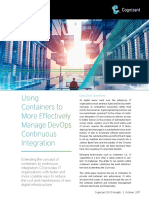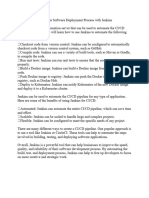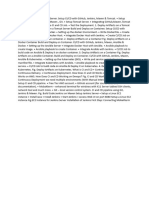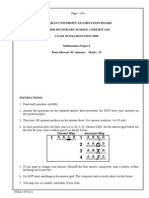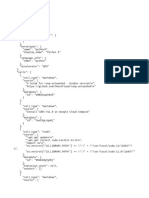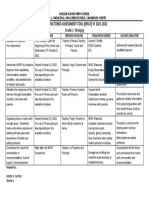0% found this document useful (0 votes)
14 views16 pagesReport
The report discusses the challenges and solutions in implementing a DevOps pipeline, particularly focusing on consistent testing through containerization. It highlights the benefits of CI/CD in reducing manual intervention and speeding up deployments, while also noting potential drawbacks related to complex applications and container management. Recommendations for improvement include enhancing automated testing and integrating additional monitoring tools to improve error detection and application reliability.
Uploaded by
mdeveloper505Copyright
© © All Rights Reserved
We take content rights seriously. If you suspect this is your content, claim it here.
Available Formats
Download as DOCX, PDF, TXT or read online on Scribd
0% found this document useful (0 votes)
14 views16 pagesReport
The report discusses the challenges and solutions in implementing a DevOps pipeline, particularly focusing on consistent testing through containerization. It highlights the benefits of CI/CD in reducing manual intervention and speeding up deployments, while also noting potential drawbacks related to complex applications and container management. Recommendations for improvement include enhancing automated testing and integrating additional monitoring tools to improve error detection and application reliability.
Uploaded by
mdeveloper505Copyright
© © All Rights Reserved
We take content rights seriously. If you suspect this is your content, claim it here.
Available Formats
Download as DOCX, PDF, TXT or read online on Scribd
/ 16

































